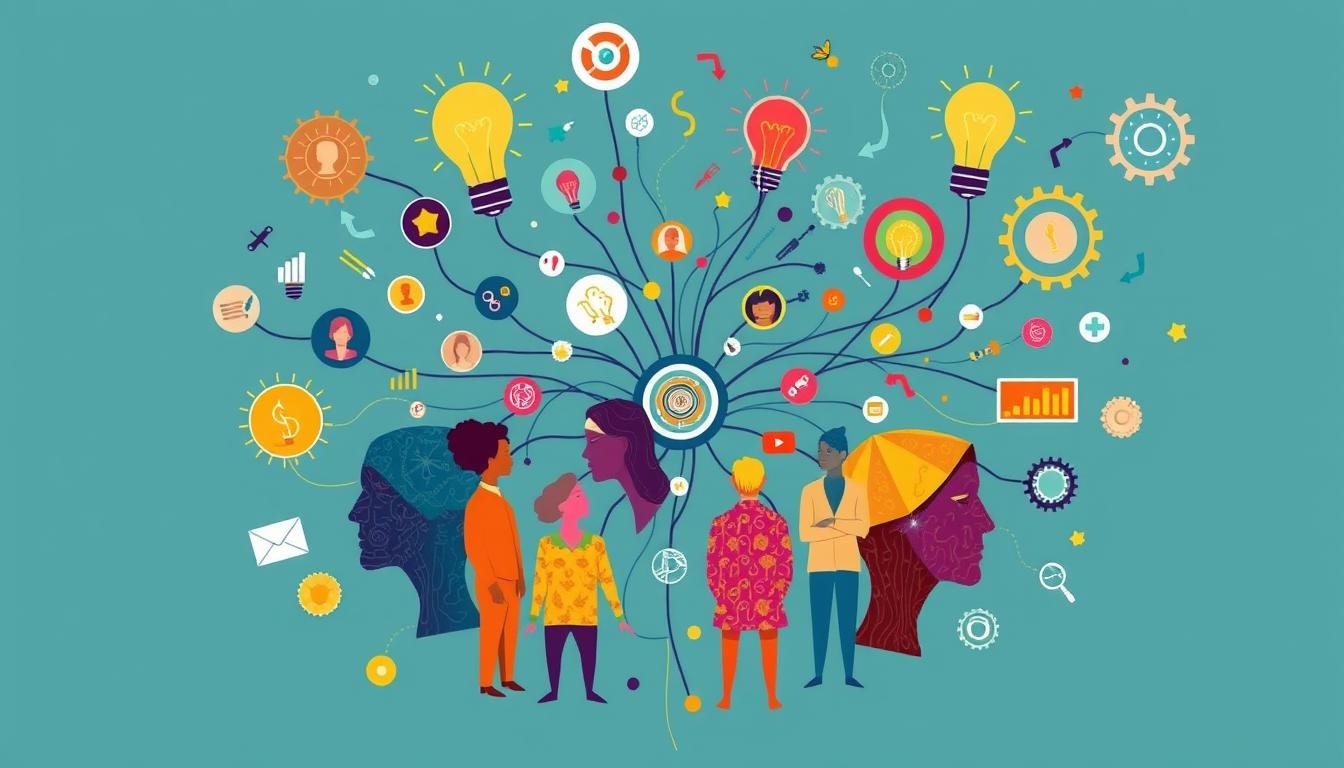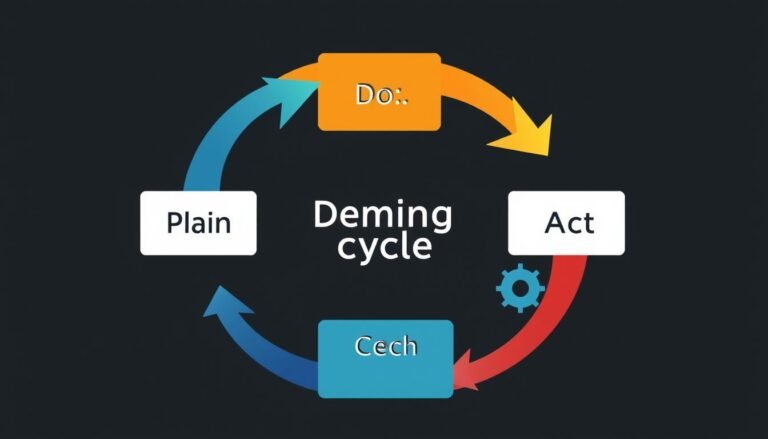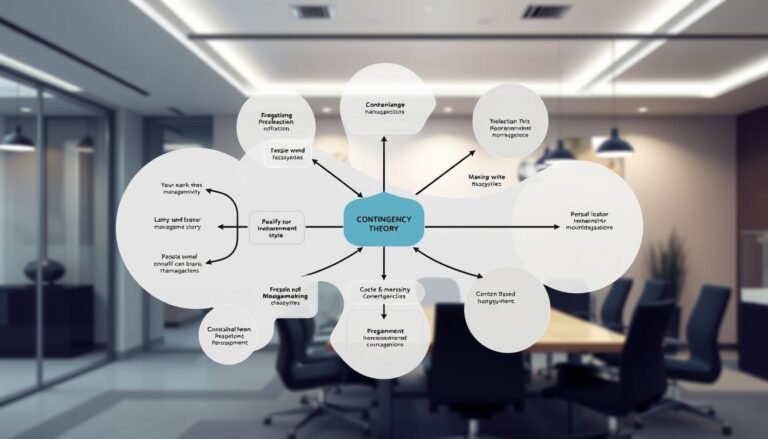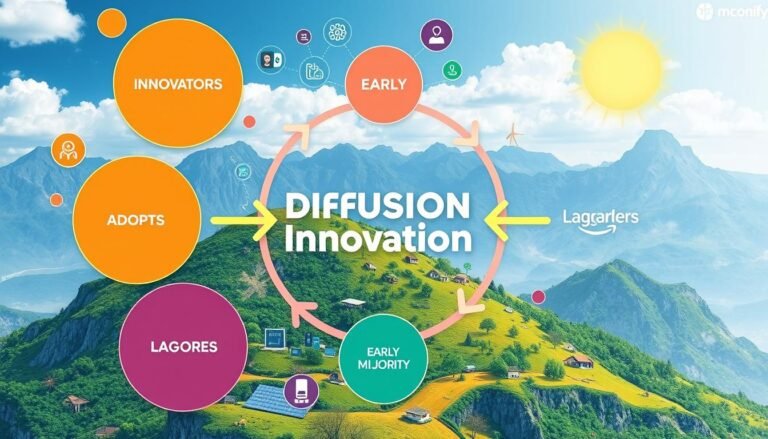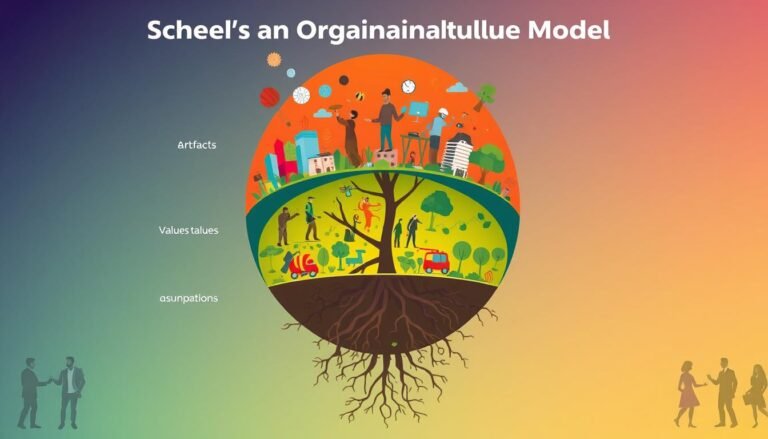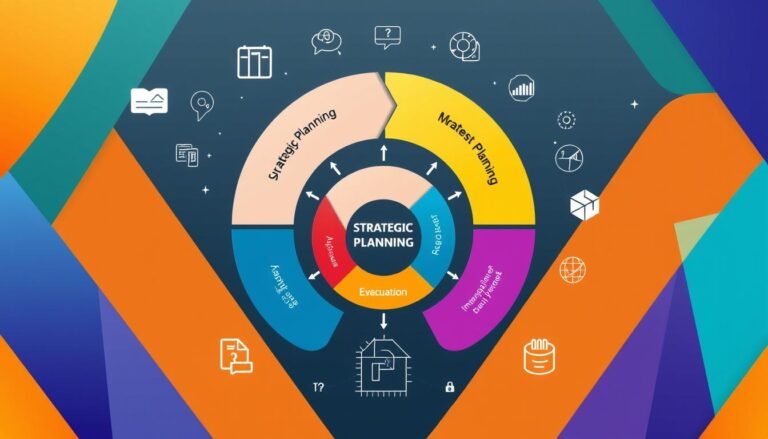Unlocking Insights with Crowdsourcing Theory
What if the best solutions to our problems are not with experts but with everyday people? This idea is at the core of Crowdsourcing Theory. It shows how a diverse crowd can solve problems better than experts alone. In our digital age, using a wide community can lead to new ideas and solutions.
This article will explore crowdsourcing. We’ll look at what it is, its history, key ideas, how it works in real life, and its benefits. It’s about how organizations can work together better in the future.
Key Takeaways
- Crowdsourcing brings people together, combining different skills and ideas.
- Platforms like Indiegogo and Kickstarter show how people can fund projects together.
- Companies like Procter & Gamble use crowdsourcing to improve their products.
- Working together leads to new ideas and solutions.
- Learning about Crowdsourcing Theory helps organizations work more efficiently.
- Dealing with groupthink is key to making better decisions.
Understanding Crowdsourcing: Definition and Relevance
Crowdsourcing is a new way to manage tasks and solve problems by using many people’s skills. It means giving a job to a group of people instead of one employee. This way, you get many different ideas and skills together.
This method makes work faster and can make the results better because many people are working together. It’s all about using the power of many minds to solve problems.
The Definition of Crowdsourcing
In 2006, the term “crowdsourcing” was introduced. It means companies use many skills without the cost of hiring people. By giving tasks to a large group, companies can work faster and cheaper.
This approach also brings new ideas and creativity to solve problems. It’s a key part of modern problem-solving.
The Role of Crowdsourcing in Modern Problem-Solving
Crowdsourcing is very important today because it uses many people’s skills and ideas. Sites like Kickstarter and Indiegogo help bring new ideas to life. Netflix used crowdsourcing to improve their algorithms, making them better.
Amazon Mechanical Turk is another example where many people do small tasks together. This not only helps companies but also builds community and loyalty. People feel connected by working on projects together.
The Wisdom of Crowds: A Historical Perspective
The idea of the Wisdom of Crowds goes way back to ancient times. It was first noticed by thinkers who saw how groups could make better decisions together. This section will look at how this idea grew and its main supporters. It will show how it has changed decision-making over the years.
Historical Roots and Evolution of the Concept
Philosophers like Aristotle talked about how groups can make better choices than one person alone. In his work “Politics,” he pointed out the benefits of making decisions together. This idea has lasted for centuries.
It became more popular in the early 2000s with James Surowiecki’s book “The Wisdom of Crowds.” Surowiecki showed how groups can be smart in many areas. His book gave a new look at this old idea.
Key Advocates: From Aristotle to Surowiecki
James Surowiecki brought the Wisdom of Crowds back into the spotlight. He explained what makes groups smart. He said things like diversity of opinion, independence, and trust are key.
He used examples, like Francis Galton’s story of a crowd guessing an ox’s weight, to show how groups can be right. Surowiecki also talked about when groups might not make good decisions. He looked at issues like too much the same thinking and feelings getting in the way.
His insights offer a balanced view. They show how groups can make better choices but also warn of the dangers of everyone thinking the same way. This connects old ideas with today’s uses.
Crowdsourcing Theory: Principles and Mechanisms
Understanding crowdsourcing is key to using collective intelligence well. Key mechanisms help organizations use diverse views for better decisions and new ideas. Diversity of opinion and independence make collaboration stronger. Decentralization in crowdsourcing means more people can join in and be creative.
Diversity of Opinion and Its Impact on Decisions
Having many voices in crowdsourcing is vital. It brings together a wide range of perspectives, leading to better results. Studies show that with a million people working on a problem, the chance of finding the right answer is almost 98%. This shows how important it is to mix different opinions for accurate solutions.
Independence and Decentralization in Crowdsourcing
Independence stops groupthink, keeping unique ideas alive in decisions. Decentralization in crowdsourcing means more people from different backgrounds can join in. This way, innovation grows and we avoid the biases of one group.
The core of crowdsourcing is about combining these unique ideas into useful advice. Companies can use these methods to make projects better and create a team spirit.
| Principle | Description | Impact on Crowdsourcing |
|---|---|---|
| Diversity of Opinion | Integration of varied perspectives to explore problems | Promotes accuracy and well-rounded solutions |
| Independence | Encourages individual input without group pressure | Preserves unique viewpoints, avoiding conformity |
| Decentralization | Allows widespread participation from diverse groups | Enhances creativity and reduces bias in outcomes |
| Aggregation Mechanisms | Tools and methods for synthesizing input | Transforms individual contributions into actionable insights |
Real-World Examples of Successful Crowdsourcing
Crowdsourcing has become a key tool in many areas. It helps make better decisions and brings new ideas to life. Here are some examples that show how crowdsourcing works in real life.
Crowdsourcing in Stock Markets
The impact of crowdsourcing in stock markets is clear. Thousands of traders and investors make decisions together. These decisions reflect market trends in real time, helping traders make smarter choices.
This group wisdom affects prices and how the market moves. It shows how what people think can change financial markets.
How Google Leverages Crowdsourcing for Its Algorithm
Google crowdsourcing is key to improving its search results. By watching what users do, Google makes search results better. This helps spot trends, improve user experience, and organize the internet’s vast information.
Case Study: Crowdsourcing in Public Health Initiatives
Public health has also seen the benefits of crowdsourcing. For example, HealthMap uses data from the community to track diseases. Frontline workers from 54 health centers found 2,271 ways to improve through contests.
This teamwork helps respond quickly to health crises. It shows how crowdsourcing can change things for the better in tough situations.
| Application Area | Example | Impact |
|---|---|---|
| Stock Markets | Collective trading decisions | Real-time market trend reflection |
| Search Algorithms | Google crowdsourcing | Enhanced search result relevance |
| Public Health | HealthMap community data tracking | Efficient outbreak response |
| Innovation Contests | FQHC initiatives | Improvement opportunities generated |
These examples show how crowdsourcing boosts innovation. It also brings people together and makes them more responsive in different areas.
Benefits of Utilizing Crowdsourcing in Organizations
Organizations are now seeing the big benefits of using crowdsourcing. It helps drive innovation and gets people more involved. By using many people’s ideas, companies can find new ways to improve their products and services.
Cost-Effective Solutions Through Collective Input
Crowdsourcing is great for saving money. Companies like Apple and Merck use it to get top-notch work without the high costs of hiring many people. It also makes decisions faster, bringing new ideas to the table quickly.
Fostering Innovation and Creativity in Development
Crowdsourcing brings new ideas and makes products better. It’s used for solving problems and improving existing products. Many companies, in tech and education, have seen how working together can lead to new discoveries and better products.
Engaging Communities for Broader Support
Crowdsourcing helps companies connect better with their customers. When people feel they’re part of something, they support the brand more. This support helps the brand grow and gives valuable feedback to improve products.
Source Links
- Unlocking Collective Intelligence: Understanding the Wisdom of Crowds
- Crowdsourcing: Definition, How It Works, Types, and Examples
- Crowdsourcing
- The Wisdom of Crowds
- Wisdom of Crowds: Definition, Theory, Examples
- Studying the “Wisdom of Crowds” at Scale
- “Crowdsourcing” ten years in: A review
- Crowd-sourcing (who, why and what)
- List of crowdsourcing projects
- Crowdsourcing & Open Innovation
- Using the Crowd as an Innovation Partner
- How smart brands push innovation
- Theoretical and Methodical Aspects of Crowdsourcing: Effectiveness and Its Measuring

